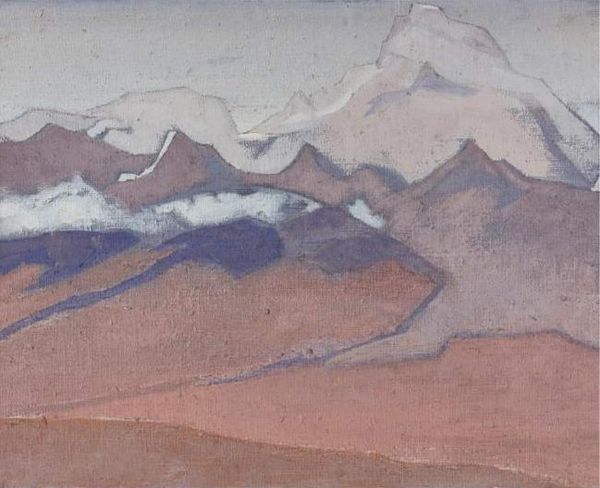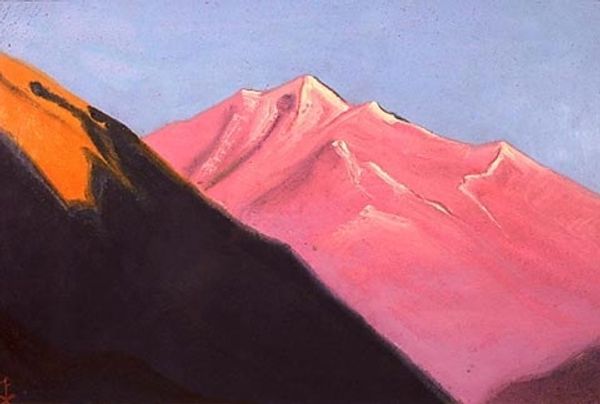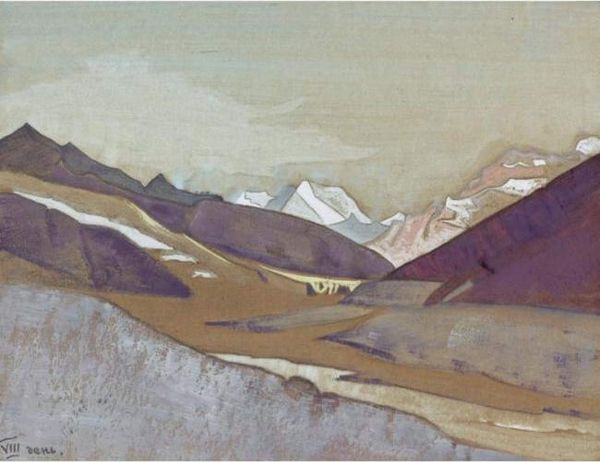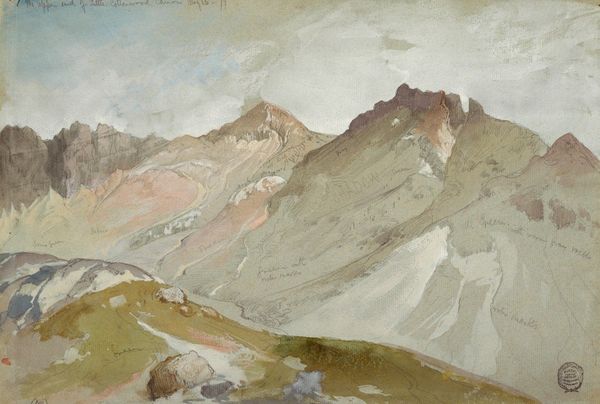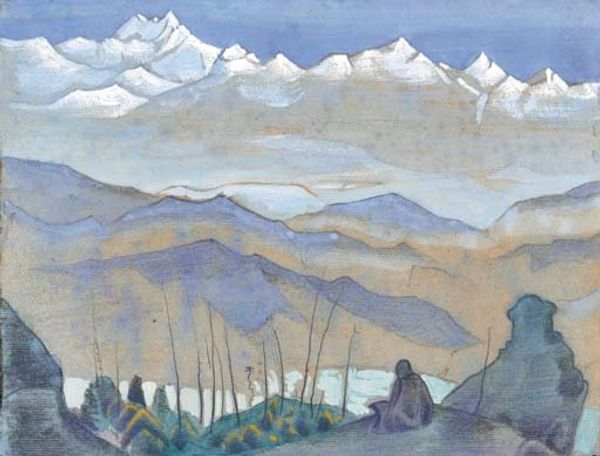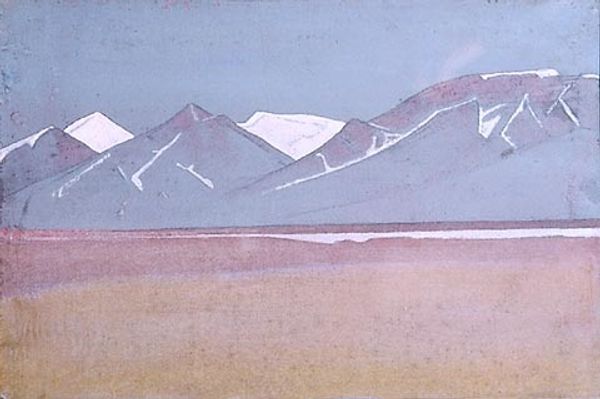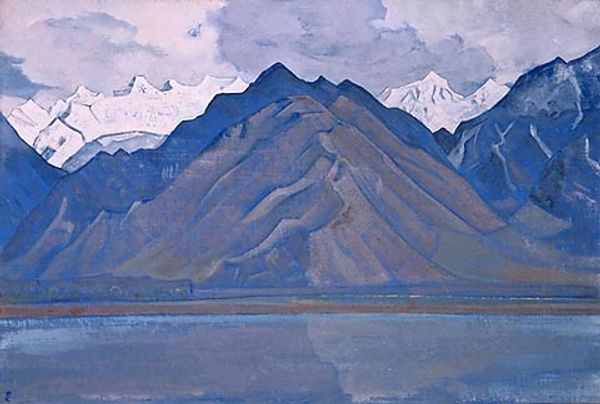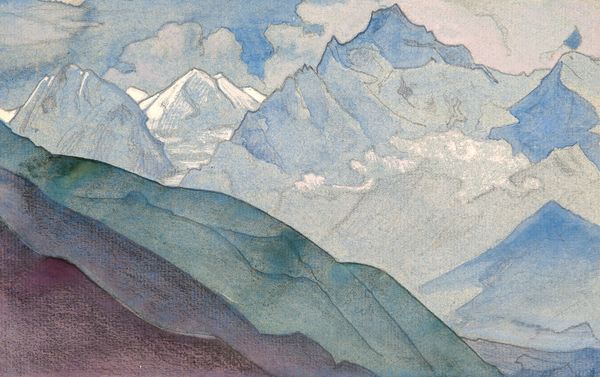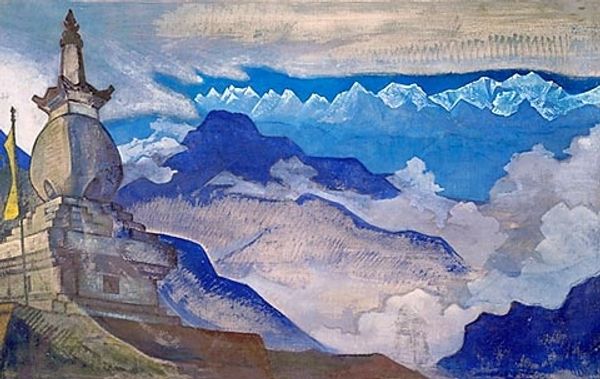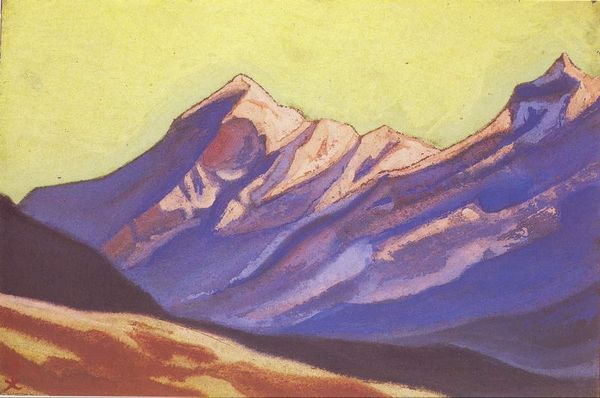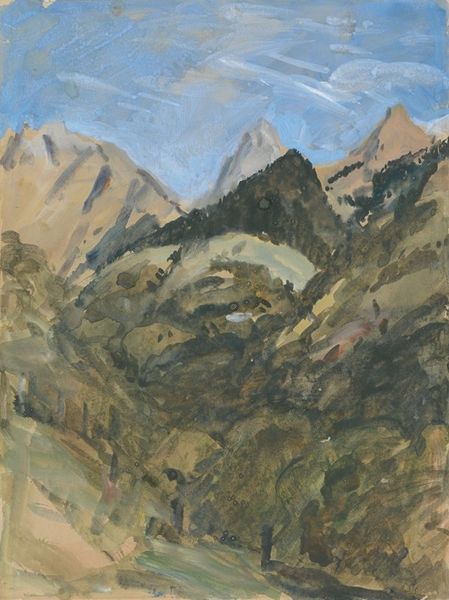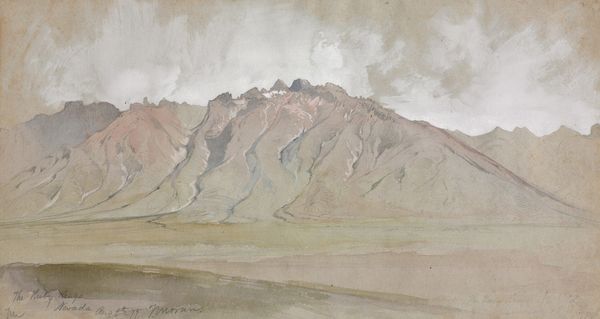
#
abstract expressionism
#
abstract painting
#
impressionist landscape
#
possibly oil pastel
#
oil painting
#
fluid art
#
neo expressionist
#
acrylic on canvas
#
mountain
#
seascape
#
expressionist
Copyright: Public domain
Curator: The oil painting "Ladakh," crafted in 1926 by Nicholas Roerich, is before us. What leaps out at you first? Editor: It's remarkably subdued. I'm drawn to the tangible surface quality; I imagine Roerich working, palette knife scraping across the canvas. You can almost feel the resistance of the paint. Curator: Indeed, and yet it almost breathes. Roerich had this capacity to evoke the spiritual dimension of these imposing landscapes, don't you think? The Himalayas were more than just geological formations for him. Editor: Of course, Roerich's involvement with the theosophical movement undoubtedly shaped his artistic lens. This place, Ladakh. It is situated on the crossroads, isn't it? For traders, monks, armies, ideas. What’s the history of color production and the availability of different oil pigments at this time and place? I am wondering how accessible different painting materials would have been in this setting and how this situation affects the choices that the artist can make, whether for style or logistics considerations. Curator: An astute point! The restricted palette adds to the almost ethereal stillness of the piece. Notice the cool blues melding with muted browns and golds... Roerich seems to mute earth's hues and elevate the landscape. Editor: Perhaps! Still, look at the foreground. The marks feel almost utilitarian, a job to get done, planes to block in; these raw, exposed areas suggest more humble artistic priorities too. I bet his techniques served both speed and spirituality! Curator: It's fascinating how you read the making of the piece. For me, it evokes this sense of journey...an ascent. Ladakh, as a crossroads of trade and thought, and here, a point of connection. Editor: Precisely, it's in those layered interactions, where the land provides both material and muse, that its meaning is shaped. Art as artifact as well as artifact as commodity. Curator: So, both grounded and transcendent? A worthy encapsulation, I feel. Thank you! Editor: Thank you! That balance of the sacred and the earthly in art has really given me some food for thought about my work in our society!
Comments
No comments
Be the first to comment and join the conversation on the ultimate creative platform.
